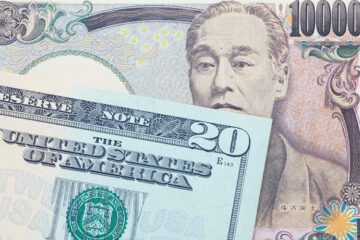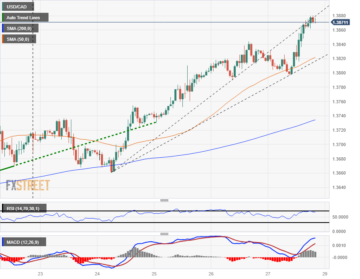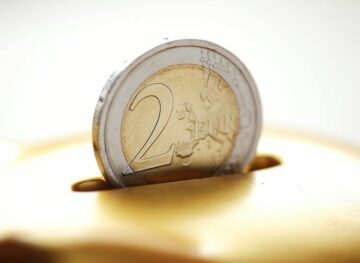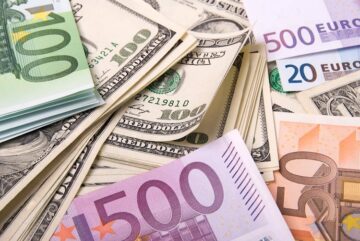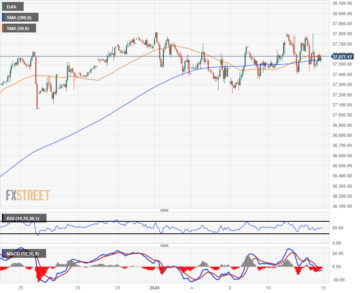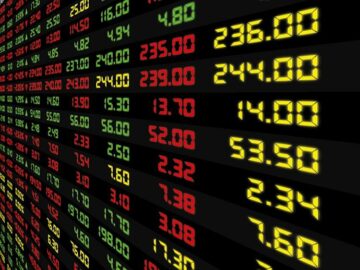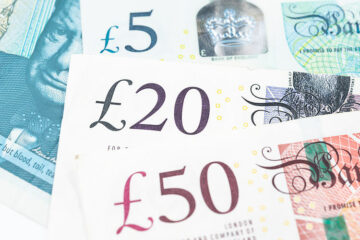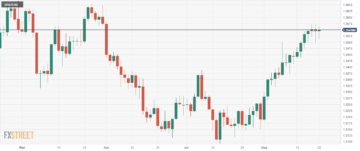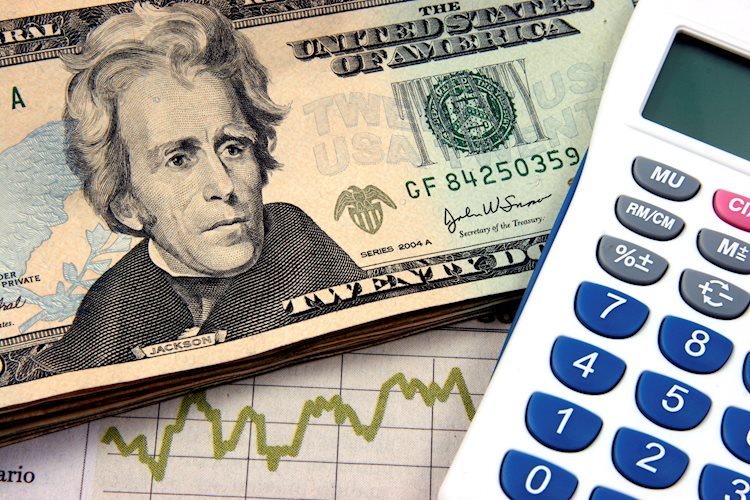
- The US Dollar trades in the green while equities retreat.
- Traders will look at US Trade Balance numbers.
- The US Dollar Index remains above 102.00, though downside pressure remains present.
The US Dollar (USD) trades broadly steady on Tuesday’s European morning, posting gains against most G20 currencies. Still, measured by the DXY US Dollar Index, the Greenback is easing a touch as a firm risk-on tone returned on Monday in US equity markets. Asian stocks took over the mood on Tuesday, with the Japanese Nikkei Index posting a fresh 34-year high at the closing bell.
On the economic front, another light agenda is due on Tuesday, with only second-tier data releases. Traders will be on the lookout to hear Federal Reserve’s Vice Chairman Michael Barr speak later this Tuesday. There are no big catalysts on the docket in the runup to the US Consumer Price Index (CPI) report on Thursday.
Daily digest market movers: Hold your horses
- The National Federation of Independent Business (NFIB) has released its Business Optimism Index for December at 11:00 GMT. The November figure was 90.6, with December coming in at 91.9.
- European Central Bank (ECB) member Mário Centeno said that the ECB does not need to wait until May to make a rate decision, with December inflation being considered as very good news in the fight against inflation. The Euro takes a step back against the US Dollar (EUR/USD) on the back of these dovish comments.
- At 13:30 GMT, the US Trade Balance numbers for November will be released:
- The US Goods Trade Balance posted a $90.3 billion deficit in October, and there is no forecast pencilled in for November.
- The US Goods and Services Trade Deficit for November is expected to widen slightly to $65 billion from a $64.3 billion deficit in October.
- The US Redbook for the first week of January will be released at 13:55 GMT. Previous was at 5.6%, with no forecast pencilled in.
- Fed’s Vice Chairman Michael Barr is due to speak around 17:00 GMT.
- The US Treasury will be heading to markets to allocate a 3-year note around 18:00 GMT.
- Equity markets are mixed on Tuesday. Asian markets are in the green after the Nikkei reached a 34-year high at its close for Tuesday. European equities are looking for direction halfway through their session, while US equity futures are down by a quarter of a percent.
- The CME Group’s FedWatch Tool shows that markets are pricing in a 95.3% chance that the Federal Reserve will keep interest rates unchanged at its January 31 meeting. Around 4.7% expect the first cut already to take place.
- The benchmark 10-year US Treasury Note holds near 4%, though calls are being issued by investors and banks that the 4% needs to be revised down.
US Dollar Index Technical Analysis: Risk tone undermines Greenback
The US Dollar is in the green this Tuesday, though be it marginally against most major peers. This makes the US Dollar Index (DXY) look like a standstill, as safe-haven inflows on the back of geopolitical tensions are being matched by the risk-on tone that triggered US Dollar selling. Ahead of the key inflation data on Thursday, the US Dollar isn’t likely to move much unless an unexpected big catalyst or a major breaking news headline moves the needle.
In the DXY US Dollar Index, the first level on the upside is 103.00, which falls nearly in line with the descending trend line from the top of October 3 and December 8. Once broken and closed above there, the 200-day Simple Moving Average (SMA) at 103.43 comes into play. The 104.00 level might be too far off, with 103.93 (55-day SMA) coming in as the next resistance.
To the downside, the rejection on the descending trendline is giving fuel to the Greenback bears for further downturn. The line in the sand here is 101.74, the floor which held halfway through December before breaking down in the last two weeks. In case the DXY snaps this level, expect to see a test at the low near 100.80.
US Dollar FAQs
The US Dollar (USD) is the official currency of the United States of America, and the ‘de facto’ currency of a significant number of other countries where it is found in circulation alongside local notes. It is the most heavily traded currency in the world, accounting for over 88% of all global foreign exchange turnover, or an average of $6.6 trillion in transactions per day, according to data from 2022.
Following the second world war, the USD took over from the British Pound as the world’s reserve currency. For most of its history, the US Dollar was backed by Gold, until the Bretton Woods Agreement in 1971 when the Gold Standard went away.
The most important single factor impacting on the value of the US Dollar is monetary policy, which is shaped by the Federal Reserve (Fed). The Fed has two mandates: to achieve price stability (control inflation) and foster full employment. Its primary tool to achieve these two goals is by adjusting interest rates.
When prices are rising too quickly and inflation is above the Fed’s 2% target, the Fed will raise rates, which helps the USD value. When inflation falls below 2% or the Unemployment Rate is too high, the Fed may lower interest rates, which weighs on the Greenback.
In extreme situations, the Federal Reserve can also print more Dollars and enact quantitative easing (QE). QE is the process by which the Fed substantially increases the flow of credit in a stuck financial system.
It is a non-standard policy measure used when credit has dried up because banks will not lend to each other (out of the fear of counterparty default). It is a last resort when simply lowering interest rates is unlikely to achieve the necessary result. It was the Fed’s weapon of choice to combat the credit crunch that occurred during the Great Financial Crisis in 2008. It involves the Fed printing more Dollars and using them to buy US government bonds predominantly from financial institutions. QE usually leads to a weaker US Dollar.
Quantitative tightening (QT) is the reverse process whereby the Federal Reserve stops buying bonds from financial institutions and does not reinvest the principal from the bonds it holds maturing in new purchases. It is usually positive for the US Dollar.
- SEO Powered Content & PR Distribution. Get Amplified Today.
- PlatoData.Network Vertical Generative Ai. Empower Yourself. Access Here.
- PlatoAiStream. Web3 Intelligence. Knowledge Amplified. Access Here.
- PlatoESG. Carbon, CleanTech, Energy, Environment, Solar, Waste Management. Access Here.
- PlatoHealth. Biotech and Clinical Trials Intelligence. Access Here.
- Source: https://www.fxstreet.com/news/us-dollar-ticks-up-with-traders-turning-averse-from-risk-assets-202401091230
- :has
- :is
- :not
- :where
- $UP
- 100
- 102
- 11
- 13
- 17
- 2%
- 2008
- 2022
- 29
- 30
- 31
- 35%
- 36
- 40
- 8
- 80
- 9
- 90
- 91
- a
- above
- According
- Accounting
- Achieve
- adjusting
- After
- against
- agenda
- Agreement
- ahead
- All
- allocate
- alongside
- already
- also
- america
- an
- analysis
- and
- Animate
- Another
- ARE
- around
- AS
- asian
- At
- average
- away
- back
- backed
- Balance
- Bank
- Banks
- BE
- Bears
- because
- before
- being
- Bell
- below
- Benchmark
- Big
- Billion
- bis
- Bonds
- Breaking
- Bretton
- Bretton Woods
- British
- British Pound
- broadly
- Broken
- business
- buy
- Buying
- by
- Calls
- CAN
- case
- Catalyst
- catalysts
- central
- Central Bank
- chairman
- Chance
- choice
- Christmas
- Circulation
- Close
- closed
- closing
- CME
- combat
- comes
- coming
- comments
- considered
- content
- control
- control inflation
- Counterparty
- countries
- CPI
- credit
- crisis
- crunch
- currencies
- Currency
- Cut
- data
- day
- December
- decision
- Default
- DEFICIT
- Digest
- direction
- does
- Dollar
- dollar index
- dollars
- Dovish
- down
- downside
- DOWNTURN
- due
- during
- Dxy
- each
- easing
- ECB
- Economic
- employment
- ends
- Equities
- equity
- Equity Markets
- EUR/USD
- Euro
- European
- European equities
- exchange
- expanded
- expect
- expected
- extended
- extreme
- factor
- Falls
- FAQ
- far
- fear
- Fed
- Federal
- federal reserve
- Federal Reserve’s
- Federation
- fight
- Figure
- financial
- financial crisis
- Financial institutions
- financial system
- Firm
- First
- Floor
- flow
- For
- Forecast
- foreign
- foreign exchange
- Foster
- found
- fresh
- from
- front
- Fuel
- full
- further
- Futures
- G20
- Gains
- geopolitical
- Giving
- Global
- GMT
- Goals
- Gold
- Gold Standard
- good
- goods
- Government
- government bonds
- great
- Green
- Greenback
- Group’s
- halfway
- Heading
- headline
- hear
- heavily
- Held
- helps
- here
- High
- history
- hold
- holds
- HTTPS
- impacting
- important
- in
- Increases
- independent
- index
- inflation
- inflows
- institutions
- interest
- Interest Rates
- into
- Investors
- involves
- Issued
- IT
- ITS
- January
- Japanese
- jpg
- Keep
- Key
- Last
- later
- Leads
- LEND
- Level
- light
- like
- likely
- Line
- local
- Look
- look like
- looking
- Low
- lower
- lowering
- major
- make
- MAKES
- mandates
- Market
- Markets
- matched
- May..
- measure
- measured
- meeting
- Michael
- might
- mixed
- module
- Monday
- Monetary
- Monetary Policy
- mood
- more
- morning
- most
- move
- Movers
- moves
- moving
- moving average
- much
- National
- Near
- nearly
- necessary
- Need
- needs
- New
- news
- next
- no
- note
- Notes
- November
- number
- numbers
- occurred
- october
- of
- off
- official
- on
- once
- only
- Optimism
- or
- Other
- out
- over
- peers
- per
- percent
- Place
- plato
- Plato Data Intelligence
- PlatoData
- Play
- policy
- positive
- posted
- pound
- predominantly
- present
- pressure
- previous
- price
- Prices
- pricing
- primary
- Principal
- printing
- process
- purchases
- QE
- QT
- quantitative
- Quantitative Easing
- Quarter
- quickly
- raise
- rally
- Rate
- Rates
- reached
- reinvest
- released
- Releases
- remains
- report
- Reserve
- Reserve Currency
- reserves
- Resistance
- Resort
- result
- Retreat
- reverse
- rising
- Risk
- Said
- SAND
- Second
- Second world war
- see
- Selling
- Services
- session
- shaped
- Shows
- significant
- Simple
- simply
- single
- situations
- SMA
- speak
- Stability
- standard
- starts
- States
- steady
- Step
- Still
- Stocks
- Stops
- substantially
- system
- Take
- takes
- Target
- Technical
- Technical Analysis
- tensions
- test
- that
- The
- the Fed
- The United States of America
- the world
- their
- Them
- There.
- These
- this
- though?
- Through
- thursday
- tightening
- to
- TONE
- too
- took
- tool
- top
- touch
- trade
- traded
- Traders
- trades
- Transactions
- treasury
- Trend
- triggered
- Trillion
- Tuesday
- turnover
- two
- unemployment
- unemployment rate
- Unexpected
- United
- United States
- UNITED STATES OF AMERICA
- unlikely
- until
- Upside
- us
- US Dollar
- US Dollar Index
- US equity markets
- us government
- US Treasury
- USD
- USD value
- used
- using
- usually
- value
- very
- vice
- Vice Chairman
- wait
- war
- was
- week
- Weeks
- weighs
- went
- when
- which
- while
- widen
- will
- with
- Woods
- world
- world’s
- Your
- zephyrnet



